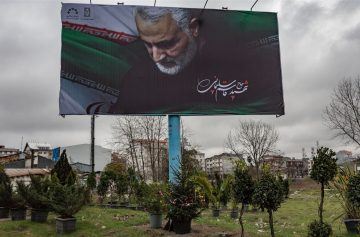Amir Ahmadi Arian in the New York Review of Books:

One spring morning, on a return visit to Iran in 2015, I was sitting in a taxi stuck in traffic in Tehran’s Towhid Square and scanning the image-plastered dashboard to kill time. I took in the familiar snapshots: Los Angeles singers like Dariush and Ebi, scantily clad Bollywood actresses, framed verses from Qur’an swinging underneath the rear mirror, and an amulet dangling from its little frame. But amid this collage, there was also a photo of someone I had never seen before: a severe but distinguished-looking uniformed man. I pointed to the picture, and spoke.
“Do you like Soleimani?” I asked the taxi driver.
“Oh, of course,” he said. “He’s my man.” Then, seeing the confusion on my face, he added, “I hate mullahs as much as anyone, believe me. But Hajj Qassem is different.”
It was after that encounter that I began to notice how ubiquitous the image of Soleimani, a man whose name few people had known just a few years earlier, had become. In the windows of corner stores, on top of car trunks and van doors—posters of him were everywhere. Just like my cab driver, ordinary people had begun to revere him despite his steadfast loyalty to the system so many of them despised.
More here.
